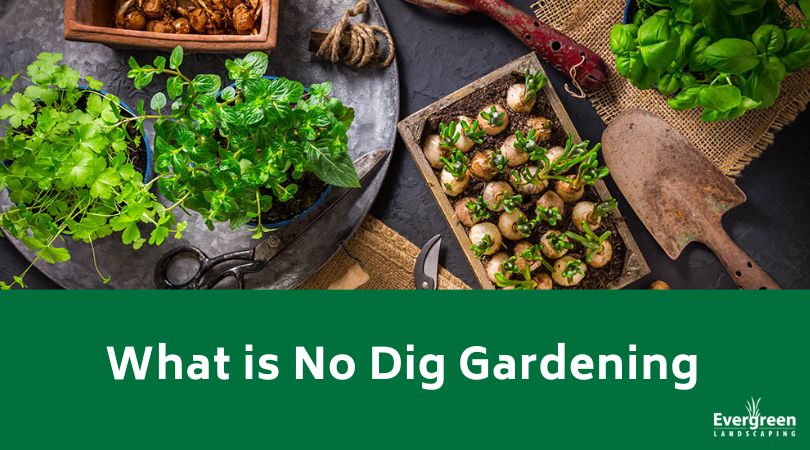
Gardeners who are looking for an easier and more efficient way of gardening should consider no dig gardening, also known as “no till” gardening. This method of gardening has been gaining popularity in the gardening world. It offers many advantages over traditional gardening methods, and it’s particularly popular among those who want to reduce their workload or are looking for an environmentally-friendly way of gardening.
Benefits of No Dig Gardening
One of the biggest advantages of no dig gardening is that it reduces the amount of labor involved in preparing the soil for planting. Traditional gardening methods often require the soil to be tilled or dug up to loosen it and make it easier for plants to take root. This can be a time-consuming and physically demanding process, especially for those with large gardens. With no dig gardening, there’s no need to till or dig up the soil. Instead, organic materials are layered on top of the soil, allowing nature to take its course.
One of the advantages of no dig gardening is that it can be easier on the gardener’s body. Traditional gardening methods such as tilling can be physically demanding and can lead to back pain or other injuries. With no dig gardening, there’s no need for heavy machinery or back-breaking labor.
No dig gardening can also be a cost-effective option for gardeners. While traditional gardening methods may require the purchase of expensive equipment such as tillers or shovels, no dig gardening requires only the purchase of organic material, which can often be obtained for free or at a low cost.
No dig gardening also helps keep weeds at bay. When organic material is layered on top of the soil, it blocks out light, preventing weeds from germinating. This means that you’ll spend less time weeding and more time enjoying your garden.
No dig gardening can be a more sustainable option than traditional gardening methods. Tilling the soil can release carbon into the atmosphere, contributing to climate change. No dig gardening helps to preserve the soil’s natural structure and can even help to sequester carbon from the atmosphere. When soil is tilled or dug up, it can disturb the soil’s natural structure and disrupt the ecosystem that exists within it. No dig gardening helps maintain the soil’s natural structure, which can be beneficial for soil health and biodiversity. No dig gardening also helps conserve water. When organic material is layered on top of the soil, it provides insulation for moisture in the ground, reducing the amount of water that evaporates. This can be particularly beneficial in areas with limited water resources.
In addition to being more environmentally-friendly, no dig gardening can also be a more aesthetically pleasing option for gardeners. Traditional gardening methods can result in soil erosion or compacted soil, which can be unsightly. No dig gardening helps to maintain the natural beauty of the soil and can result in a lusher and more vibrant garden
How to Plant a No Dig Garden
Creating a no dig garden is relatively easy. To get started, simply layer organic materials on top of your existing soil. Good options include compost, manure, grass clippings, leaves, and straw. Over time, the organic material will decompose and enrich the soil, creating a nutrient-rich environment that is perfect for growing plants. No dig gardening can be used for both vegetable and flower gardens, and it’s a great option for both beginners and experienced gardeners. The key is to choose materials that are free from pesticides and other harmful chemicals, and that will break down easily over time. Second, you’ll want to make sure you’re using enough organic material to create a thick layer that will block out light and suppress weeds. Finally, it’s important to monitor your garden regularly to make sure it’s growing healthy and strong.
Another important consideration for no dig gardening is soil health. While no dig gardening can help to maintain the natural structure of the soil, it’s still important to ensure that the soil is healthy and nutrient-rich. This can be achieved using organic fertilizers or by incorporating other amendments into the soil, such as bone meal or blood meal.
One potential challenge of no dig gardening is that it can take longer for the soil to warm up in the spring, which can delay planting. However, this can be mitigated by using black plastic or other materials to help trap heat and warm up the soil more quickly.
In conclusion, no dig gardening is a simple, easy, and efficient way of gardening that offers many benefits over traditional gardening methods. By using organic materials to create a nutrient-rich soil base, no dig gardeners can reduce labor, suppress weeds, conserve water, and maintain a healthy ecosystem within their gardens. Whether you’re a beginner or an experienced gardener, no dig gardening is definitely worth considering for your next gardening project.
If you’re ready to bring your home to full bloom this Spring, contact us today!
